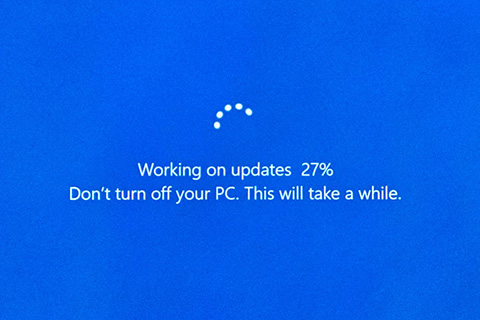When a software creator such as Apple or Microsoft makes changes to their main platform or operating system, they either adjust the number before the decimal of the system or afterward. One might expect, when going from Windows 10.1 to 10.2, to have minor incremental changes, but going from 10 to 11 to have more major changes in how the platform looks and operates. The same is true for phones and tablet operating systems.
However, it’s hard to say that the same is true for Congress, given that many bills are not revisited within the same structural framework, and so often get a new name or acronym rather than being considered an update of an earlier bill. For example, in 2019, Congress passed the Setting Every Community Up for Retirement Enhancement Act, generally known by its initials as the “SECURE Act.” A wide range of changes were covered in that legislation, including postponing Required Minimum Distributions until the taxpayer reaches age 72 (the old rule had been 70½) and the elimination of the “stretch” treatment for an inherited IRA. That legislation enjoyed bipartisan support, and has been considered a success.
In 2022, Congress developed four new bills addressing various aspects of qualified retirement plans. Ideas from all four proposals were consolidated into the SECURE Act 2.0, which then became Division T of the “Consolidated Appropriations Act, 2023” (the omnibus budget bill enacted just before Christmas).
Is this SECURE Act 2.0 really a major platform change with new features, or more a collection of minor adjustments to the existing code?
Here are some of the biggest adjustments within the existing framework:
- Another RMD postponement. Beginning in 2023, the age for starting Required Minimum Distributions is lifted to 73. On January 1, 2033, the age goes to 75.
Additional consideration: This change does not affect the “charitable IRA rollover,” under which those who are 70½ may arrange for a direct transfer of up to $100,000 from an IRA to a qualified charity. Also, that $100,000 limit is now indexed for inflation.
- Larger “catch-up” contributions. Those who are 50 and older are permitted an extra $1,000 on their IRA contribution limit. Although the basic IRA contribution limit is indexed for inflation, the extra “catch-up” contribution has not been. Beginning in 2024, it will be. What’s more, beginning in 2025 the “catch-up” contribution limit will be boosted to $10,000 for those who are 60, 61, 62, and 63.
- Reduced penalty for failure to take an RMD. What happens if someone fails to receive a Required Minimum Distribution? A 50% excise tax is applied to the amount that should have been distributed. Beginning in 2023, that tax is reduced to 25%, and if the taxpayer makes a timely correction, the tax is reduced to 10%.
- Penalty-free distributions in some circumstances. Beginning immediately, premature distributions to terminally ill persons will no longer be subject to the 10% penalty tax. Beginning in 2024, survivors of domestic abuse will be permitted to withdraw the lesser of $10,000 or 50% of their retirement plan account without the 10% tax penalty. Income taxes will apply, but can be refunded if the amounts withdrawn are repaid within three years.
Here are some completely new additions to the framework:
- Matching student loan payments. Recent college grads who are still paying off their student loans at the start of their careers may find it difficult to defer any of their earnings into an employer’s retirement plan. Failure to contribute would be unfortunate, because then they miss out on the employer match for retirement deferrals, which can be helpful in pushing to get started on a financially responsible track. Under the new law, employers may condition the 401(k) matching contribution on an employee’s student loan payments.
- 529 plan rollovers. What happens when there is money left in a 529 education savings account when the beneficiary graduates? Tax penalties apply if the funds are not used for qualified education expenses. Beginning in 2024, 529 plan beneficiaries may roll up to $35,000 of their leftover funds into a Roth IRA under certain conditions. The account needs to have been in existence for at least 15 years.
Given minor and major adjustments to the current system we are familiar with, this likely does deserve to be called SECURE Act 2.0, and most of the adjustments will be good for retirees. Just like a major operating system update, it’s likely that some things you were once familiar with are harder to find at first. It’s also true that how you go about retirement planning should be adjusted for the newer tools in place.
For example, at first glance, the higher RMD postponement means that those who can delay their retirement plan distributions will have more years of tax-deferred growth. However, the eventual RMDs will be larger each year, which could mean higher income taxes on them. Even if it’s not required to take RMDs earlier, you might still want to do so based on your current and expected tax brackets.
If you feel that you could use help with retirement planning, or just don’t really want to read Division T of the omnibus bill, that’s where Garden State Trust Company comes in. Consider us the Genius Bar, or Geek Squad of retirement planning, and bring us your questions. We’d be pleased to be of service, and let you know how recent legislation applies to your unique family situation.





